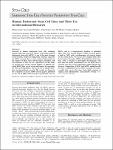Human embryonic stem cell lines and their use in international research
Löser, Peter
Schirm, Jacqueline
Guhr, Anke
Wobus, Anna M.
Kurtz, Andreas
Research in human pluripotent stem cells, including human embryonic stem cells (hESC) and human induced pluripotent stem cells (hiPSC), is one of the most dynamic research fields. Despite the high public attention, especially for hESC research, there is only scattered information on the number of hESC lines and the degree, dynamics, and diversification of their use on a global level. In this study we present data on the current number of publicly disclosed hESC lines, on the extent and impact of experimental work involving hESCs, and on the use of specific hESC lines in international research. The results are based on the evaluation of nearly 1,000 research papers published by the end of 2008, which describe experimental work on hESCs, and of a comprehensive database of published hESC lines. The average impact of hESC research papers is high at 7.422, with a predominance of research output by the United States. Of at least 1,071 original hESC lines derived up to November 2009 at 87 institutions in 24 countries, only a fraction is thoroughly characterized. Our data show the global predominance of a few hESC lines in research, but also reveal remarkable country-specific differences. Comparison of hESC and hiPSC application did not show a diminished role for hESC research, but rather revealed that, up to this time, both fields continue to expand, exist independently, and partially overlap.
No license information

